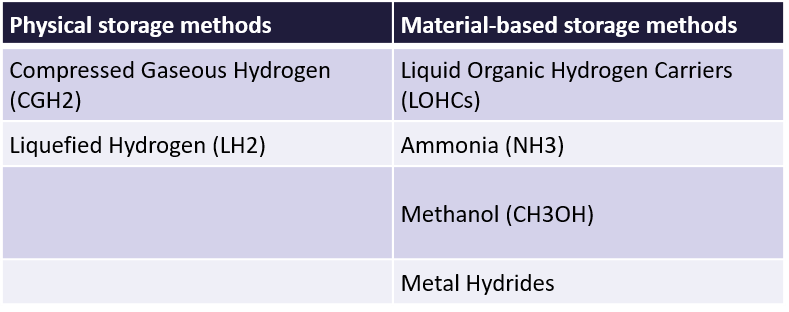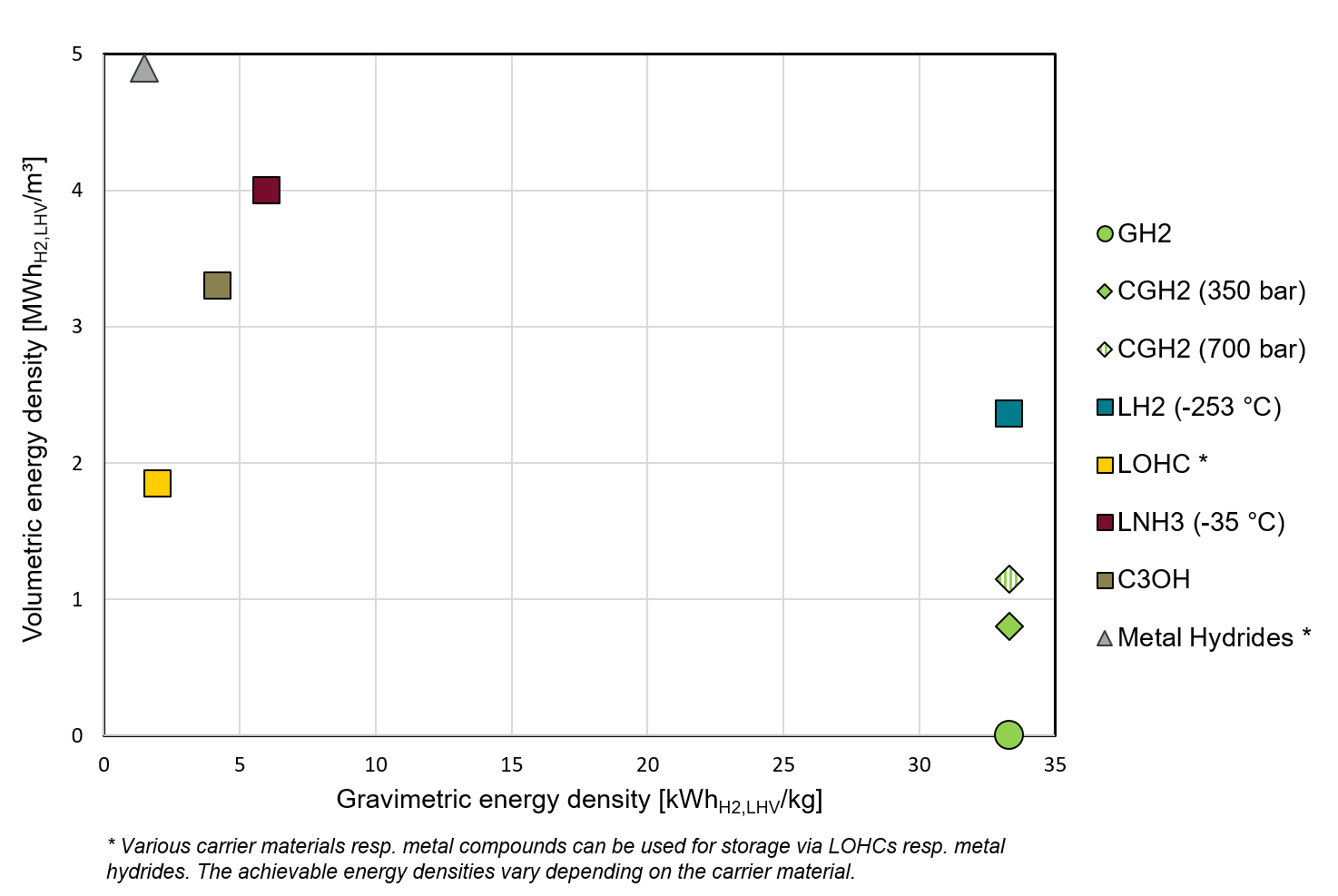3.2 Hydrogen Storage
| Website: | Hamburg Open Online University |
| Kurs: | Green Hydrogen |
| Buch: | 3.2 Hydrogen Storage |
| Gedruckt von: | Gast |
| Datum: | Samstag, 29. November 2025, 07:01 |
Beschreibung
This chapter discusses the options for storing hydrogen, categorized as physical and material-based methods. The graph illustrates the volumetric and gravimetric energy densities achieved by different storage methods. Compressed gaseous hydrogen and liquid hydrogen are explored, along with underground storage facilities. Liquid Organic Hydrogen Carriers (LOHCs) and metal hydrides are also mentioned as potential storage options.
1. Different hydrogen storage options
The options for storing hydrogen can be divided into physical methods (increase of volumetric energy density by changing physical parameters such as pressure or temperature) and material-based methods (increase of volumetric energy density by binding to certain materials or forming new chemical compounds). An overview is given in the table below.

